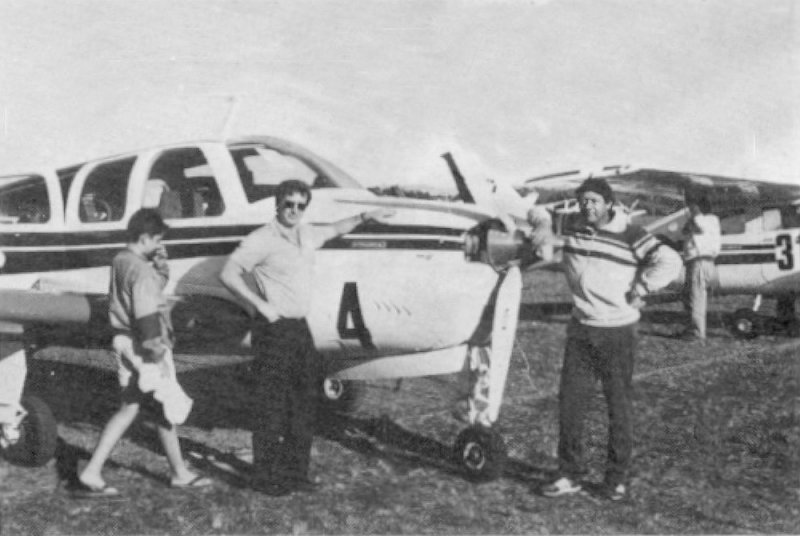1988 State President’s Trophy Air Race


1988 State President’s Trophy Air Race
Margate, 27 to 30 May 1988.
By Vic Kaiser
With clear skies virtually throughout the country the first of the competitors arrived at Margate as early as Thursday afternoon. Friday morning we looked set for yet another cloudless day and the official route was released at 08h00. The rest of the competitors arrived during the course of the day, the last registration being at 16h30.
Everybody proceeded to San Lameer where the sponsors BMW (S.A.), hosted a cocktail party and a warm welcome was extended to all by Mr. John Jessup (member of the Management Board – Marketing) of BMW (S.A.).
Pre-race briefing was held early on Saturday morning and already there were signs of low cloud drifting up from the south. By 08h30 the skies could no longer bear their load and we were treated to some of the heaviest winter rains seen in years. The first leg was postponed till Sunday and while some competitors returned to their rooms to prepare the alternate route, others ventured to the gambling dens of the Wild Coast Casino.
Sunday morning we were greeted by warm and cloudless skies and the Lear 25d was first off on the route to Underberg – Ladysmith – Weenen and then back to Margate – taking only 38 minutes to complete this course. Next off was the Cessna Citation 11, also requiring only 50 minutes to complete the course. The rest of the field followed at 10h30 at one-minute intervals after both jets had returned safely.
The first feedback came from our Marshal at Ladysmith, Des Tarboton, who overheard the following conversation between Durban AIC and an S.A.A. Airbus – “We’re overhead Ladysmith at a groundspeed of 460 kt and we have an unidentified light aircraft below us, that is out accelerating us”.
The whole field returned safely with only four competitors missing the turning point at Underberg. As one of the competitors was unable to depart from Lanseria on Saturday morning due to weather, he only arrived after the start of the race and was then sent round the course with a video camera. The video recording was superb and undoubtedly confirmed his flight to all the checkpoints.
The two jets were again sent off first on Monday proceeding to Magwa Tea Estates, then on to Barkley East, Kokstad and then back to Margate. The rest of the field was started at 10h25 with the first aircraft off being the Cessna 170. Drama struck when the Beechcraft Sundowner developed engine trouble shortly after take off and was forced to return to Margate whilst the start was still in progress. Unfortunately, two of the Bonanzas were delayed by one minute whilst the Sundowner returned to land.
First across the line was the Beechcraft Baron of last year’s winners, John Sayers and Chris Kyle, followed also by previous winners Peter Walker and Marius Els in their Beechcraft Baron. The rest of the field followed shortly afterwards with the last aircraft returning at 13h45.
A special mention should be made of the one overseas entry – a Beech 23 G-BDYL piloted by T. Rose (U.K.) and navigator E. de Villiers (S.A.). More overseas entries should he encouraged.
The prize-giving banquet was held in a marquee at San Lameer, magnificently decorated in an aviation theme by BMW (S.A.). Unfortunately, the Natal Mercury Trophy for the First National Pilot was erroneously awarded. After reconciliation, the trophy was awarded to Chris Proctor and Andrew Campbell of Pietermaritzburg.
On behalf of the organisers, I’d like to express my thanks to the following people: BMW (S.A.), Gill Kaiser, Peter Wood, Graeme Conlyn, Margate Municipality, Refuellers, Air Traffic Control, André Steyn, Sue MeGlashan, Schwartz Jewellers, National Airways Corporation, all the Marshalls, Time Keepers, Airport Management, Department of Civil Aviation, San Lameer staff, Handicapping Committee and Aero Club of South Africa, all the competitors for another safe, incident-free race.





















